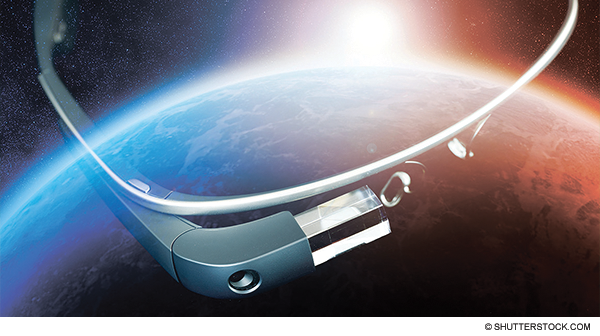
Likewise, Mike Stone, MD, FACEP, chief of the division of emergency ultrasound in the department of emergency medicine at Brigham and Women’s, has been working with another software developer to display ultrasound images on Glass while performing ultrasound procedures. While physicians must use both hands to perform ultrasounds, he explains that they also switch their gaze multiple times from the procedure to an ultrasound screen.
Explore This Issue
ACEP Now: Vol 33 – No 07 – July 2014
“There’s nothing more discouraging to patients than watching a doctor’s face buried in a keyboard”
—Paul Porter, MD
“A real-time, heads-up display during the procedure enables you to continue looking at the patient while performing the procedure,” said Dr. Stone, adding that accurate hand placement is critical for obtaining quality images. With Google Glass, he said, a physician can see what trainees in another room are seeing and help guide their hands.
Meanwhile, integrating the device with existing technology is proving challenging, said Dr. Pozner. He said “thoughtful development” of Google Glass is critical, especially where doctor-patient interactions are concerned.
“If we approach it strictly from a technology [perspective], we will fail,” Dr. Pozner said. “If we approach it from how the technology can make things better and how it can improve the doctor-patient relationship, we’ll have much more chance of success.”
Since February, Rhode Island Hospital has been testing a HIPAA-compliant stripped-down version of Google Glass for real-time audio-visual dermatology consults with patients. This study is part of a larger program at Brown University to train the next generation of doctors in the safe and appropriate use of technology in health care, said Paul Porter, MD, a physician in the emergency departments of Rhode Island, Hasbro Children’s, and The Miriam hospitals and associate professor of emergency medicine at Brown University.
“There’s nothing more discouraging to patients than watching a doctor’s face buried in a keyboard,” he said, adding that another study will investigate the efficacy of emergency medical service providers using Google Glass with stroke victims.
Other than a short battery life, occasional overheating, and a handful of dropped calls, Dr. Porter said physicians and patients have been extremely satisfied with Google Glass. So far, only one patient declined its use during her care for reasons unknown.
He said the technology helps emergency physicians put their eyes back on the patient instead of a desktop screen, which enhances physician-patient relations. “And that’s good,” Dr. Porter said. “That’s very good.”
Carol Patton is a freelance journalist based in Las Vegas.
Pages: 1 2 3 | Single Page




No Responses to “Google Glass May Help Emergency Physicians Improve Patient Care”